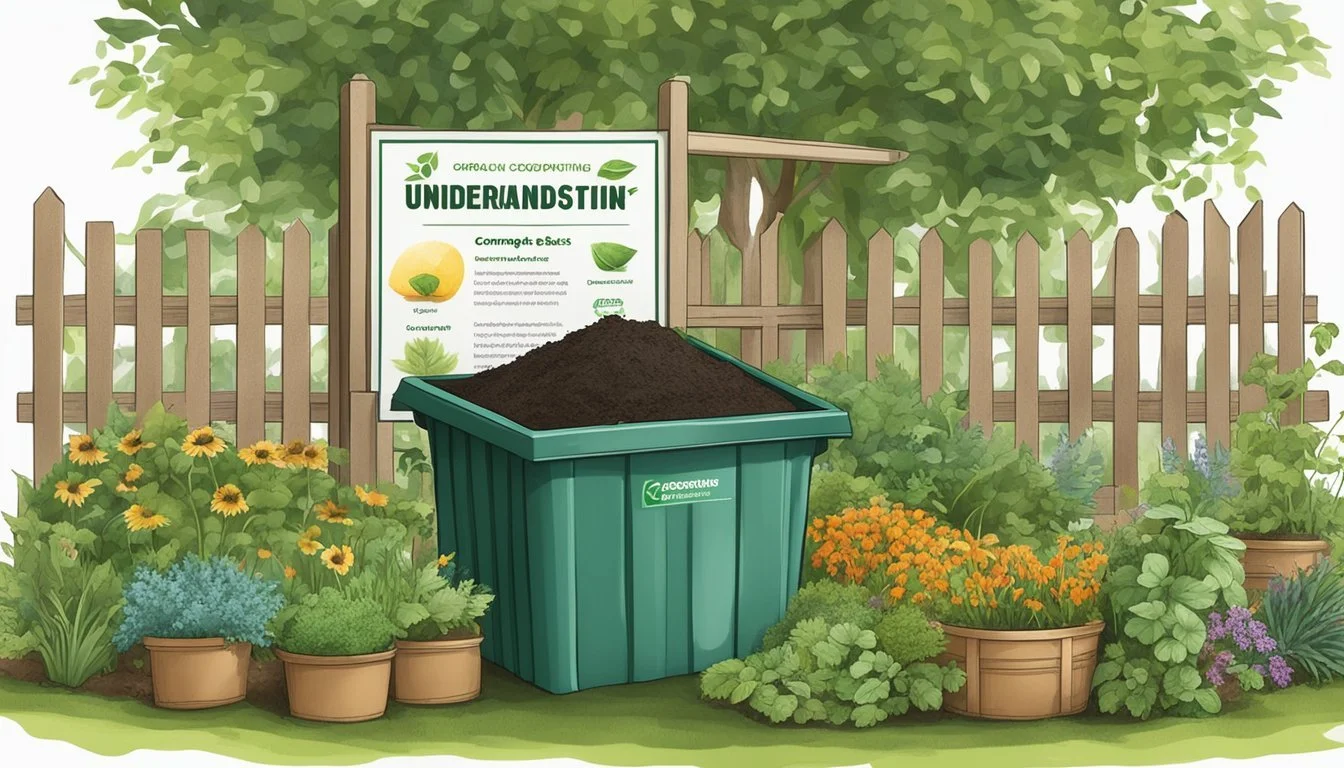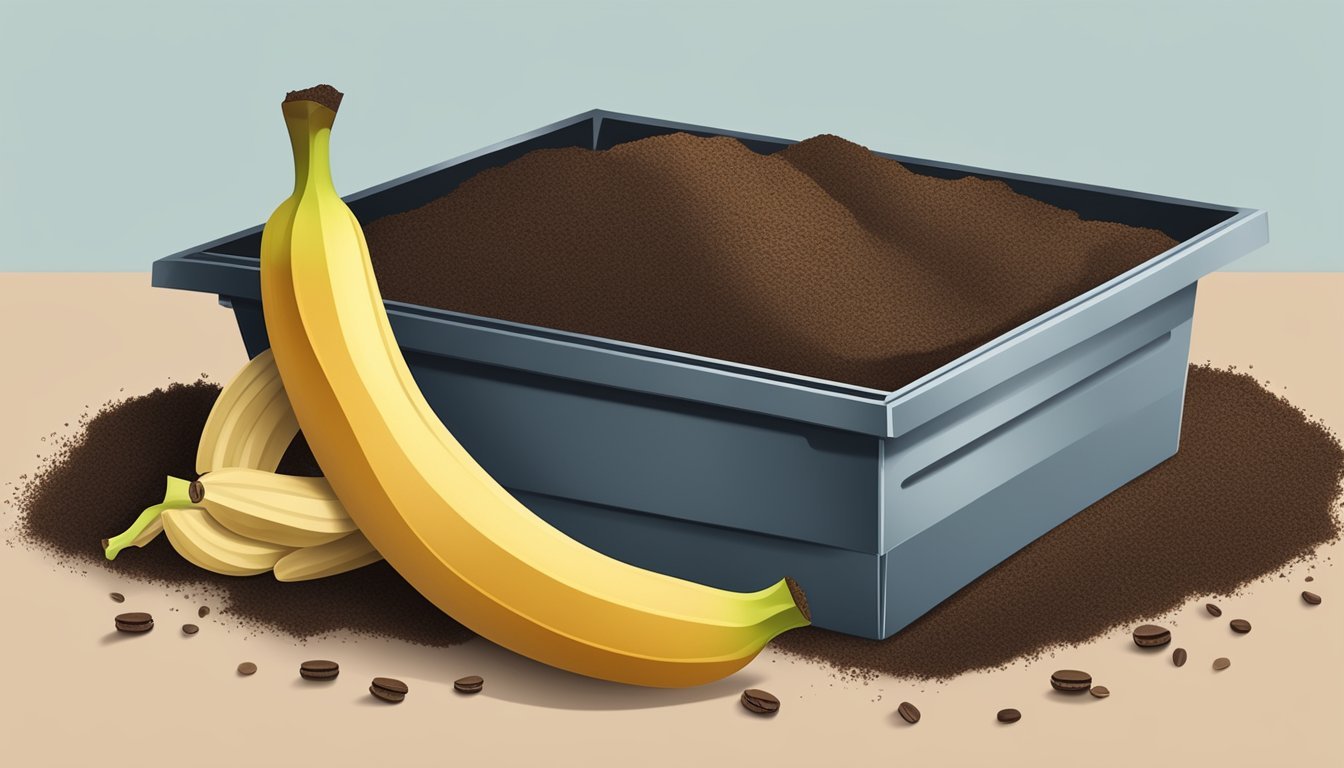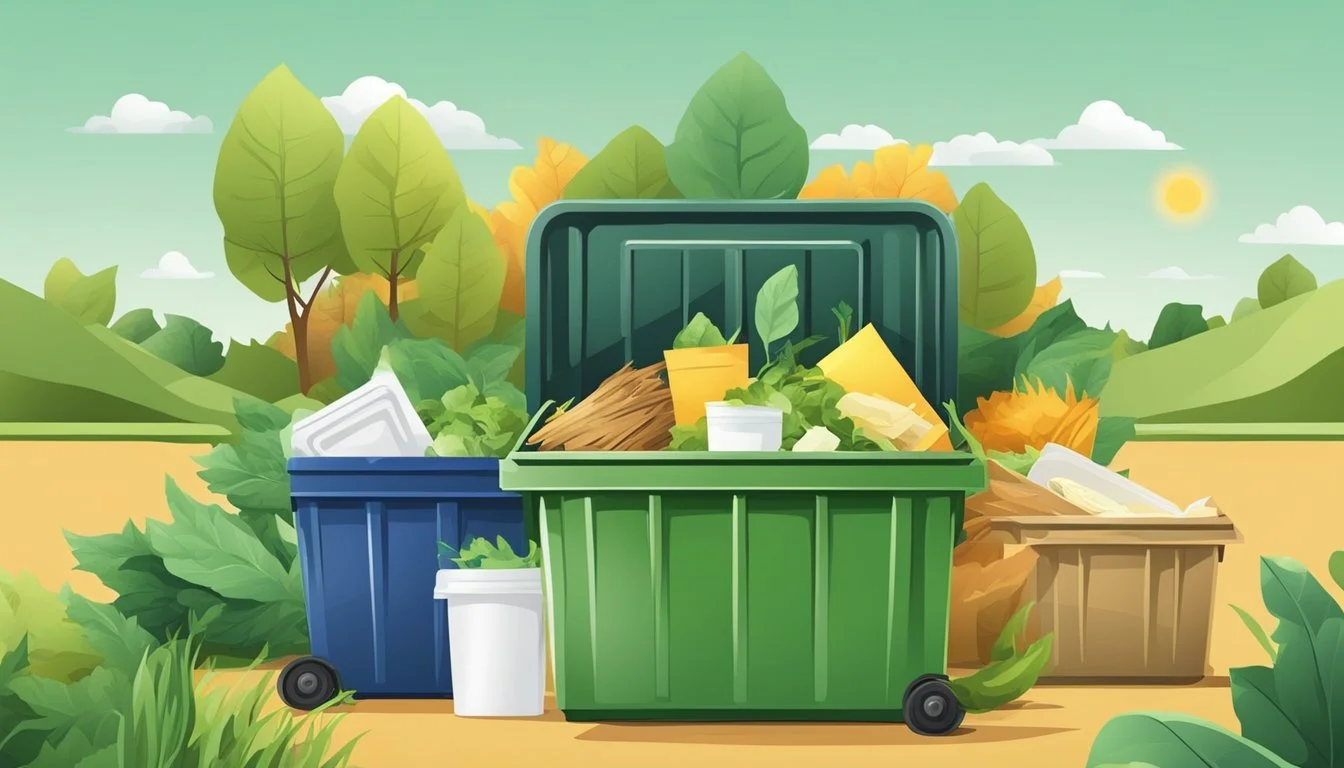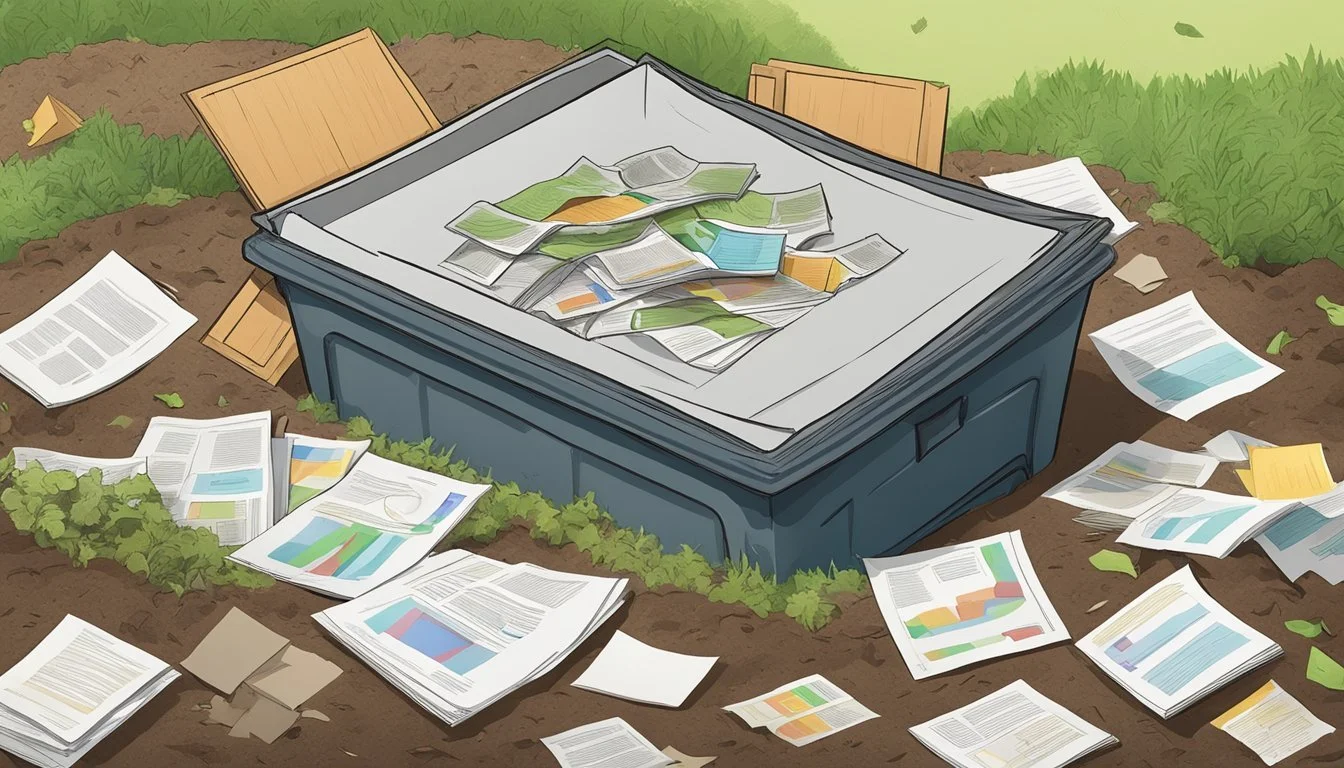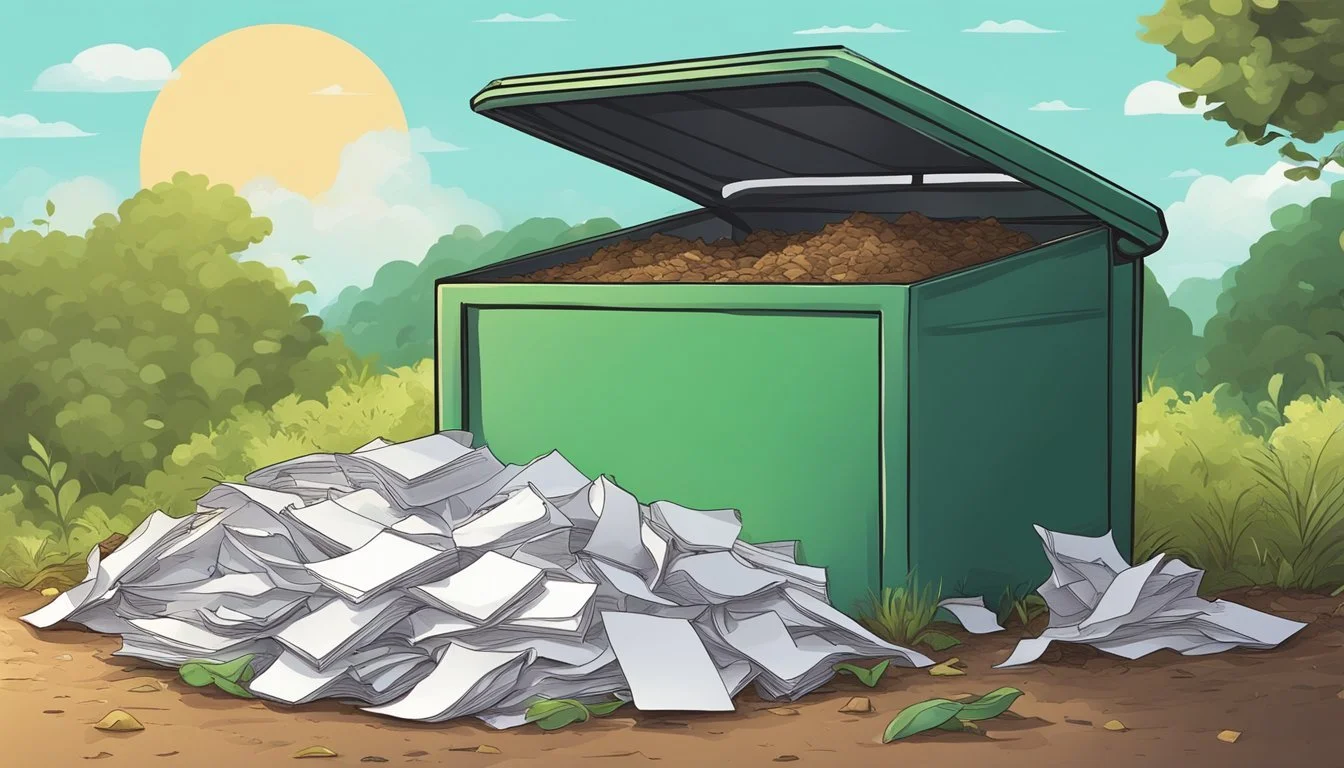Can You Compost Glossy Paper?
Debunking Recycling Myths
In the journey toward more sustainable lifestyles and waste reduction, composting has emerged as a key practice for homeowners and gardeners. Composting not only reduces the amount of waste sent to landfills but also creates a valuable product that can improve soil health. Among the various materials added to compost piles, paper products are commonly included because they are a source of carbon, an essential element in the composting process. However, not all paper is created equal when it comes to composting.
Glossy paper, often found in magazines, brochures, and some types of packaging, poses a particular dilemma. The allure of composting glossy paper stems from its prevalence in the waste stream and the desire to repurpose as much household waste as possible. But the glossy finish on such paper usually involves the use of plastic or wax coatings, which are designed to resist degradation, thus slowing down the composting process. Moreover, the inks used on glossy paper may contain heavy metals and other toxic substances that can be harmful to the compost ecosystem.
Understanding Composting Basics
Compost is an eco-friendly way to recycle organic matter, enriching soil and aiding the environment. It involves specific components and carefully maintained conditions to support the decomposition process.
What Is Composting?
Composting is the biological decomposition of organic matter by microorganisms under controlled conditions to produce compost. At its core, the process transforms green and brown materials into a nutrient-rich soil additive.
Green materials provide nitrogen – examples include fruit scraps, vegetable peels, and coffee grounds.
Brown materials supply carbon – such as dead leaves, twigs, and paper.
Benefits of Composting
Composting offers several environmental benefits:
Reduces landfill waste: Organic materials in landfills can produce methane, a potent greenhouse gas.
Improves soil quality: Compost adds nutrients, enhances moisture retention, and boosts beneficial soil microorganisms.
Supports plant growth: By amending the soil with compost, one can encourage healthier, more robust plants.
Compost Components and Balance
Successful composting requires a balance between green (nitrogen-rich) and brown (carbon-rich) materials. Microorganisms thrive with the right mix, ensuring effective decomposition. Moisture and oxygen are also critical to support the composting process. The ideal carbon to nitrogen ratio (C ratio) is about 25-30:1.
Moisture: Should keep the compost pile damp but not soggy.
Oxygen: Essential for microorganisms and achieved through regular turning of the compost pile.
Glossy Paper and Composting
When addressing the compostability of glossy paper, it is crucial to understand its composition and the potential risks it poses to the composting process. Alternatives to composting should also be considered to ensure environmental sustainability.
Composition of Glossy Paper
Glossy paper typically features a base paper coated with a mixture of chemicals and plastic coatings to achieve a smooth, shiny finish. This inked surface is designed to enhance colors and durability. Unlike standard paper, these additional layers affect the paper's ability to break down in a compost setting.
Risks of Composting Glossy Paper
The primary concern with composting glossy paper lies in the compounds used to produce that high sheen. These often include plastics and other chemicals that are not biodegradable. When introduced to a compost heap, they can leach toxic substances, which may contaminate the compost and make it unsuitable for use on gardens or crops. Moreover, these components do not break down easily, potentially leading to landfill issues if not handled correctly.
Alternatives to Composting Glossy Materials
As composting is not an ideal disposal method for glossy materials, recycling is the recommended alternative. Many recycling programs accept glossy paper, where it's processed and reused, keeping it out of landfills. If recycling is not an option, consider reducing the use of glossy paper and choosing materials that are more environmentally friendly and easier to recycle or compost.
Paper Materials in Compost
In the realm of composting, not all paper materials are created equal. Their suitability often depends on the type of paper and the processing method prior to inclusion in a compost pile.
Paper Types Suitable for Composting
Newspaper: Uncoated newspapers are generally safe for composting as they use soy-based inks.
Shredded Paper: Plain shredded paper, such as office paper, is compostable. Shredding increases the surface area and hastens decomposition.
Brown Paper: Unbleached brown paper, including paper bags and paper towels, is appropriate for compost as they are often free from inks and dyes.
Corrugated Cardboard: This material is also compost-friendly, particularly if it is shredded or broken down into smaller pieces.
Processing Paper for Compost
Before adding paper to compost, shredding or tearing it into smaller pieces can significantly improve its breakdown rate. This allows microorganisms easier access to the paper, thus aiding in its rapid decomposition. However, note that:
Glossy papers should be avoided as they may contain plastics or chemicals that do not break down in compost piles.
It is important to balance green (nitrogen-rich) and brown (carbon-rich) materials, with paper generally classified as a brown material.
Effects of Paper on Compost Quality
Paper materials added to compost help to balance the carbon-to-nitrogen ratio, which is crucial for effective composting. They introduce carbon, which, combined with nitrogen from sources like food scraps, creates a hospitable environment for composting microorganisms. However:
Not all paper is equal; glossy or heavily inked papers can introduce unwanted chemicals into the compost.
Mix paper with other materials to ensure even distribution and avoid clumping, which can limit airflow and slow down the composting process.
In essence, choosing the right type of paper and processing it correctly can contribute positively to the overall compost mix, enhancing the compost quality without causing harm to the environment.
Inks and Dyes in Composting
When composting paper products, the type of inks and dyes present on the paper can affect the overall compost quality. Ensuring that inks are non-toxic and eco-friendly is essential for a safe composting process.
Toxicity of Inks and Dyes
Inks and dyes on glossy paper may contain substances that are harmful to the composting ecosystem. These substances include:
Heavy Metals: Some inks contain heavy metals like lead or mercury, which can contaminate compost.
Chlorine: Paper that is bleached using chlorine can release harmful dioxins into the compost.
BPA (Bisphenol A): Found in some colored inks and glossy paper coatings, BPA can disrupt endocrine function.
Safe Composting Tip: It is generally recommended to avoid composting glossy paper due to these potential contaminants.
Identifying Safe Inks for Composting
For compostable paper, the focus should be on inks that are:
Soy-Based: They are often non-toxic and considered safe for composting.
Water-Based: These inks typically have a lower environmental impact than petroleum-based alternatives.
To ensure safe composting practices, composters should look for paper printed with eco-friendly inks or dyes, as these are less likely to introduce unwanted chemicals into the compost pile.
Composting Non-Paper Products
When exploring composting options beyond paper, it's important to understand not all materials break down safely in a compost pile. Cardboard and certain other non-paper products can be composted if prepared correctly, while non-compostable materials must be disposed of appropriately.
Composting Cardboard
Cardboard is a valuable addition to compost as it provides carbon, which balances the nitrogen found in food scraps and other green waste. Here are specific guidelines for composting cardboard:
Remove any plastic tape or stickers: These materials are non-biodegradable and should not be included in the compost pile.
Break down boxes: Flatten and tear cardboard into smaller pieces to accelerate decomposition.
Avoid wax-coated cardboard: Wax impairs breakdown and may introduce contaminants.
Proper Disposal of Non-Compostable Materials
Materials that cannot be composted should be carefully sorted and responsibly disposed of to minimize environmental impact. Some common non-compostable items include:
Plastic: Check for recycling programs in your community.
Wax: Wax-coated materials usually belong in the trash, but some types can be recycled.
Dairy and certain food scraps: Dairy products can attract pests and create odor problems; check local guidelines for these items.
It's essential for individuals to research and adhere to specific guidelines regarding the composting and disposal of both paper and non-paper products to ensure environmentally-friendly practices.
Maintaining a Healthy Compost Pile
Creating nutrient-rich compost requires more than just adding scraps to a pile; it involves careful management of ingredients and environmental conditions. The balance of green and brown materials, proper moisture, and adequate aeration are key factors, as is avoiding potential contaminants.
Balancing Compost Ingredients
To maintain a healthy compost pile, one must balance 'green' nitrogen-rich materials like vegetable scraps, and 'brown' carbon-rich materials like dried leaves. A general guideline is to use a ratio of 1 part green to 3 parts brown. This helps to ensure that the compost pile breaks down materials effectively, producing a rich, balanced compost.
Balanced Compost Ingredients:
Greens: Vegetable scraps, fruit waste, grass clippings
Browns: Dry leaves, straw, sawdust, paper
Managing Moisture and Aeration
Compost piles require adequate moisture to allow microorganisms to thrive and decompose organic matter. The pile should be as wet as a wrung-out sponge; too much water can lead to anaerobic conditions and unpleasant odors. On the other hand, excess moisture may also be detrimental, causing a slimy, less efficient composting process. Turning the pile regularly introduces oxygen, which is essential for aerobic decomposition and maintaining health in the compost heap.
Moisture and Aeration Checklist:
Consistency: Aim for damp, not soaked, material
Turning: Aerates the pile, mixing outer dry materials with inner moist layers
Avoiding Contamination
Safety in composting means excluding materials that can introduce toxins into the pile. It is advised to avoid glossy paper, as it may contain inks and chemicals that do not break down in the composting process, potentially introducing unwanted toxins. By keeping these contaminants out, one not only preserves the safety of the compost but also the health of the garden where it will be applied.
Common Contaminants to Avoid:
Glossy Paper: May contain harmful inks and chemicals
Meat and Dairy Products: Can attract pests and cause odor issues
Chemically Treated Plants: May introduce persistent herbicides into the compost
Environmental Impacts of Composting
When considering the environmental impacts of composting, two significant benefits stand out: the reduction of waste going to landfills and the promotion of more sustainable, eco-friendly practices.
Reduction of Waste to Landfills
By composting materials that would otherwise end up in landfills, individuals and communities can significantly reduce the volume of waste that contributes to landfill growth. Every ton of paper diverted from the waste stream, for example, saves 3.3 cubic yards of landfill space. Not only does this help extend the lifespan of existing landfills, but it also reduces the production of landfill-related pollutants, such as methane—a potent greenhouse gas.
Landfill space saved by composting paper: 3.3 cubic yards per ton
Key pollutant reduced: Methane
Promoting Sustainable Practices
Composting is a practice that aligns well with the principles of zero waste and sustainability. By returning organic materials like non-glossy paper and cardboard back to the soil, composting supports the cycle of recycled materials and enriches the earth without the use of chemical fertilizers. This process also promotes the use of eco-friendly materials and encourages individuals to consider the lifecycle of the products they consume.
Eco-friendly benefits:
Reduces the need for chemical fertilizers
Promotes the recycling of organic waste
Sustainability goals supported by composting:
Zero waste initiatives
Soil enrichment with recycled materials
Exploring Composting Research and Advancements
Recent studies have shown significant advancements in composting methods, enhancing environmental sustainability and efficiency.
Current Findings in Compost Research
Research into composting has provided new insights into materials suitable for compost bins. Specifically, studies have found that glossy paper, commonly thought to be non-compostable due to its coating, can sometimes be broken down in highly managed composting systems. It's crucial, however, to discern between the types of glossy coatings, as some may contain environmentally harmful components like heavy metals or plastic. Researchers emphasize that incorporating glossy paper should be done with caution; certain types of ink or clay coatings might be more compostable than previously believed.
Furthermore, the Environmental Protection Agency (EPA) stresses the importance of composting in waste management, and current research supports this by revealing that composting can help reduce methane emissions from landfills. Additionally, researchers are exploring the relationship between compost use and reduced reliance on chemical herbicides, suggesting added benefits for garden health.
Innovative Composting Techniques
Innovative composting techniques have evolved to become more environmentally friendly and to accelerate the decomposition process. Scientists have developed methods that:
Enhance aeration within compost bins, speeding up the breakdown of organic matter.
Use environmentally sensitive additives to help break down more resistant materials.
Optimize moisture and temperature levels to create ideal conditions for decomposition.
Advanced composting techniques not only deal more effectively with traditional compost materials but also examine the potential for composting newer types of waste. The goal is to reduce the overall environmental impact while providing nutrient-rich compost for gardens and agriculture.
Researchers remain dedicated to discovering new composting methods and to refining existing ones, ensuring they can support a broad range of waste products without harming the environment.
Composting in Different Settings
Composting glossy paper requires awareness of the specific challenges associated with different composting environments, from individual kitchen bins to larger community systems.
Composting at Home
Home composting often occurs in a kitchen bin or a backyard heap. Kitchen composting benefits from a controlled environment, but space is limited, so the volume of glossy paper should be minimal. Home composters can shred glossy paper to speed up decomposition, but they should be cautious of the plastic or wax coatings which can impede breakdown.
Kitchen: Recommended for small amounts of shredded glossy paper.
Backyard: Larger systems can potentially handle more volume but need monitoring for plastic coatings.
Community and Urban Composting
Composting in a community or urban setting presents an opportunity for more robust systems capable of handling diverse waste types. Community gardens and larger composting facilities often cater to a broader range of materials, including some glossy papers if they do not contain heavy metals or other contaminants.
Community Composting: Typically managed by knowledgeable individuals who can assess and sort materials appropriately.
Urban Composting: Advanced systems may have specific guidelines for glossy paper, such as dedicated bins or pre-processing requirements.
Both settings require participants to understand what types of paper are suitable for composting to avoid contamination and ensure a successful, environmentally friendly composting process.
Conclusion
In the context of sustainability and efficient composting practices, there is a significant consideration for the types of paper introduced into compost piles. Glossy paper, often recognized for its shiny, smooth finish, presents specific challenges. It typically incorporates a plastic or wax coating, which inhibits the breakdown process required for successful composting. Consequently, these materials can disrupt the balance and purity of compost intended for organic gardening.
A discerning composter should be cautious of adding glossy paper to their compost heap. Instead, recycling is the more appropriate disposal route for such materials. The recycling process accommodates the different treatment needed to handle the coatings found on glossy paper. This choice supports the objective of reducing waste without compromising the quality or safety of the resulting compost.
Additionally, there is a concern regarding the potential for chemicals, such as dioxin, to be present in inks used on glossy paper. This introduces risks when decomposing materials intended to nurture plant life. Despite these concerns, not all glossy papers are equal. Some may use natural substances like china clay for their gloss, potentially reducing their environmental impact. However, the presence of these substances should be verified prior to composting.
In summary, for individuals dedicated to maintaining a robust and uncontaminated compost system, the exclusion of glossy paper is advised. Steering clear of introducing materials that may contain non-organic coatings or harmful chemicals will result in healthier, more sustainable compost output.


